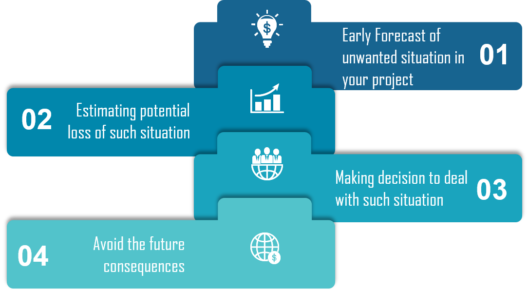Risk Analysis in Software Testing:
The probability of any unwanted incident is defined as Risk. In Software Testing, risk analysis is the process of identifying the risks in applications or software that you built and prioritizing them to test. After that, the process of assigning the level of risk is done. The categorization of the risks takes place, hence, the impact of the risk is calculated.
Why use Risk Analysis?
Using risk analysis at the beginning of a project highlights the potential problem areas. After knowing about the risk areas, it helps the developers and managers to mitigate the risks. When a test plan has been created, risks involved in testing the product are to be taken into consideration along with the possibility of the damage they may cause to your software along with solutions.

Some risks you may face as a developer:
-The time that you allocated for testing
-A defect leakage due to the complexity or size of the application
-Urgency from the clients to deliver the project
-Incomplete requirements
Risk level:
-Business Risks: Risk that may come from your company or your customer.
-Testing Risks: You should be well acquainted with the platform you are working on, along with the software testing tools being used.
-Premature Release Risk: a fair amount of knowledge to analyze the risk associated with releasing unsatisfactory or untested software is required
-Software Risks: You should be well versed with the risks associated with the software development process.
Risk Assessment:
There are three perspectives of Risk Assessment:
-Effect – To assess risk by Effect. In case you identify a condition, event or action and try to determine its impact.
-Cause – To assess risk by Cause is opposite of by Effect. Initialize scanning the problem and reach to the point that could be the most probable reason behind that.
-Likelihood – To assess risk by Likelihood is to say that there is a probability that a requirement won’t be satisfied.
How to perform Risk Analysis?
-Searching the risk
-Analyzing the impact of each individual risk
-Measures for the risk identified
Random functions:
If we wanted a random integer, we can use the randint function Randint accepts two parameters: a lowest and a highest number. Generate integers between 1,5. The first value should be less than the second.
import random
print random randit(0,5)
That will generate a random number between (0,5), If you want a larger number, you can multiply it.
-random.choice(myList): will choose a random value from a list
-shuffle(x) : The shuffle function, shuffles the elements in list in place, so they are in a random order.
-randrange: random.randrange(0, 101, 5) :Generate a randomly selected element from range(start, stop, step)
Resources:
Done by Omar-zoubi